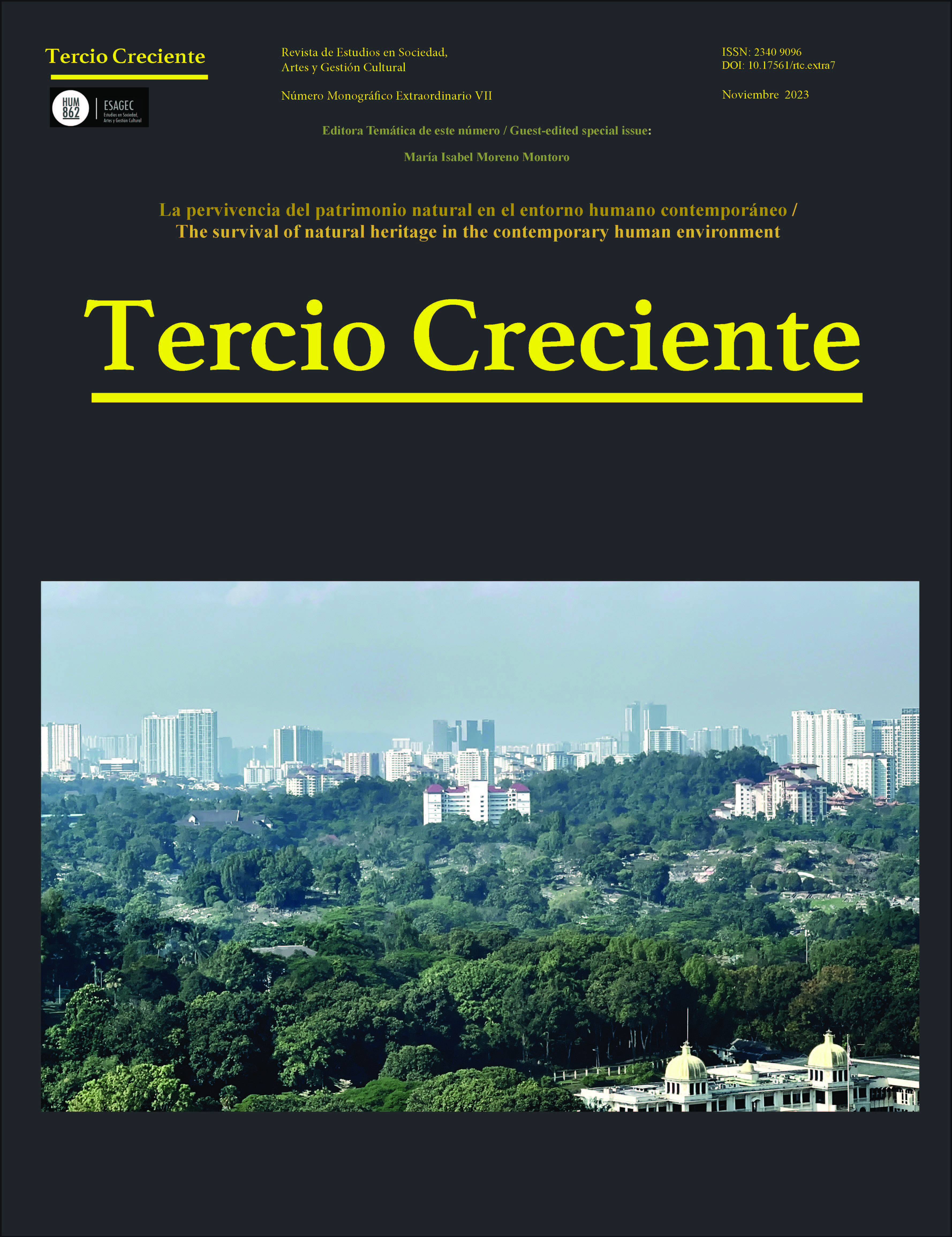The search for the ecological percussionist and the need to open new work branches to create social awareness
DOI:
https://doi.org/10.17561/rtc.extra7.6910Keywords:
Percussion, Nature, Recycling, AwarenessAbstract
The human being has been helped by nature since time immemorial, for example by making noise with bones and sticks to scare away animals. This leads us to the origin of percussion. Currently, within music education systems, there is a lack of awareness among students that they are actually making sound elements extracted from nature.
Climate change, together with macro-farms, pollution, overexploitation of natural resources, etc.. are creating a problem within society, which is in a state of dormant consciousness, where it is not able to assume that the Earth is asking for help.
Therefore, artists have a fundamental role to play in awakening these consciences, whether through artivism, music, theater, dance or painting.
Therefore, this article seeks the need to awaken the ecological percussionist performer, giving examples of artists and instruments that use nature as such and recycled elements to build their own instruments.Downloads
References
Albelda, José & Sgaramella, Chiara (2015). Arte, empatía y sostenibilidad. capacidad empática y conciencia ambiental en las prácticas contemporáneas de arte ecológico//art, empathy and sustainability. empathic ability and environmental awareness in contemporary ecological art practices. Ecozon@: European Journal of Literature, Culture and Environment, 6(2), 10-25. https://doi.org/10.37536/ECOZONA.2015.6.2.662
Anónimo. (2022). La sexta. Retrieved from https://www.lasexta.com/programas/el-intermedio/mujer-tenia-que-ser-sandra-sabates/reflexion-jane-goodall-pandemia-nos-hemos-buscado-nuestro-maltrato-animales_2022011961e88663fd726300017dc011.html
Baquero, Tomás (2017). Focos de subjetivación: John Cage junto a Guattari y Foucault. Paper presented at the IX Congreso Internacional De Investigación Y Práctica Profesional En Psicología XXIV Jornadas De Investigación XIII Encuentro De Investigadores En Psicología Del MERCOSUR.
Daniel y Julian. Flairdrum. Retrieved from https://www.flairdrum.com/en/product-category/instruments-2/
Ferreyra, Ilda Peralta (2014). Paraguay: Sonidos de la tierra. música con objetos reciclados. Aularia: Revista Digital De Comunicación, 3(2), 73-76.
Heredia, Juan Manuel (2011). Deleuze, von uexküll y “la naturaleza como música”. A Parte Rei, 75(1-7), 15.
Llorente Espino, Miquel (2015). Tambores de la evolución. © Boletín De La Asociación Primatológica Española, 2015, Vol.22, Núm.2, P.42-45, https://doi.org/10.24137/raeic.2.4.7
López, Rocío (2015). The sound of garbage: The landfill harmonic orchestra.
Maker music festival. (2021). Retrieved from https://www.makermusicfestival.com/
Museo de Instrumentos Musicales Dr. Emilio Azzarini. (2013). Berimbau. Retrieved from http://sedici.unlp.edu.ar/
Raimondo, Danilo & Bolla, CristinaArtigiano del suono. Retrieved from https://www.artigianodelsuono.com/it/
Ruiz, María Isabel, & Soto Sánchez, Maria Pilar (2014). Los latidos de la tierra: Arte ecológico para acompasar nuestros ritmos. Arte Y Políticas De Identidad, , 321-336.
Pardo Salgado, Carmen, (2016). Una música para habitar el mundo, en Musique et écologies du son. Propositions théoriques pour une écoute du monde, París, L’Harmattan. (Publicación en español en el boletín del IVAM https://ivam.es/es/presentes/carmen-pardo-salgado-una-musica-para-habitar-el-mundo/)
Soto Sánchez, Maria Pilar (2017). Arte, ecología y consciencia: Propuestas artísticas en los márgenes de la política, el género y la naturaleza.
Vargas, Hernán (2018). Proyecto “Suena barro”. Info Cerámica, Retrieved from https://www.infoceramica.com/2018/08/proyecto-suena-barro/
Downloads
Published
Issue
Section
License
Copyright (c) 2023 Rocío Palao Pérez

This work is licensed under a Creative Commons Attribution 4.0 International License.
Those authors who have publications with this magazine, accept the following terms:
The authors will retain their copyright and will guarantee to the journal the right of first publication of their work, which will be simultaneously subject to the Creative Commons Attribution License that allows third parties to share the work whenever their author is indicated and its first publication is this journal.
Authors may adopt other non-exclusive license agreements to distribute the version of the published work (eg to be deposited in an institutional telematic file or published in a monographic volume) provided the initial publication is indicated in this journal .
Authors are encouraged to disseminate their work via the Internet (eg in institutional telematic files or on their website) before and during the submission process, which can produce interesting exchanges and increase the number of citations of the published work..
In case of being accepted works will be published under Creative Commons license.





















